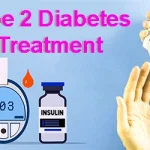Cancer health check
Cancer health check: Cancer is a malignant disease in which abnormal cells grow uncontrollably, invade surrounding tissues and cause fatal damage to the body. There are many types of cancer, each named based on the location or cell type it affects,
such as breast cancer, lung cancer, or leukemia . In healthy cells, growth, division, and death are carefully controlled, but cancer cells avoid these controls, allowing them to multiply unchecked.
What are cancer tests?
Cancer tests are medical tests used to detect cancer, monitor its progression, or guide treatment. Here’s a rundown of common types of cancer tests:
1. Screening Tests
Screening tests are used to detect cancer in people without symptoms. Common cancer screening tests include:
Mammogram: X-ray of the breast to detect breast cancer.
Pap Smear and HPV Test: Screens for cervical cancer.
Colonoscopy: Examines the colon for colorectal cancer.
Low-Dose CT Scan: Screens for lung cancer, especially in heavy smokers.
PSA Test: Measures prostate-specific antigen levels to screen for prostate cancer.
2. Imaging Tests
Imaging tests create pictures of the inside of the body to help detect and monitor cancer.
X-ray: Often the first step in detecting tumors or abnormal growths.
CT (Computed Tomography) Scan: Creates detailed cross-sectional images of the body, useful for locating tumors.
MRI (Magnetic Resonance Imaging): Uses magnets and radio waves for detailed images, often of soft tissue.
PET (Positron Emission Tomography) Scan: Shows cancer spread by revealing metabolic activity.
Ultrasound: Uses sound waves to create images, often used to check for tumors in soft tissues.
3. Laboratory Tests
Lab tests analyze blood, urine, or other bodily fluids to detect cancer markers or abnormal cells.
Complete Blood Count (CBC): Checks for unusual levels of red or white blood cells, which may indicate blood cancers like leukemia.
Blood Protein Testing: Measures abnormal immune system proteins, helpful for cancers like multiple myeloma.
Tumor Marker Tests: Checks for substances like PSA (prostate), CA-125 (ovarian), or CEA (colon) in blood or tissue samples.
4. Biopsy
A biopsy is the removal of tissue or cells for examination under a microscope. This is one of the most definitive ways to diagnose cancer.
Needle Biopsy: A needle is used to extract tissue, often from the breast, prostate, or thyroid.
Surgical Biopsy: A small incision is made to remove a part or all of a suspicious area.
Endoscopic Biopsy: Uses a thin tube with a light and camera to examine organs and collect tissue samples ( in the digestive tract or lungs).
Genetic Testing
Genetic tests analyze DNA to detect mutations associated with a higher cancer risk. For example:
- BRCA1 and BRCA2 Testing: These gene mutations increase the risk of breast and ovarian cancer.
- Lynch Syndrome Testing: Helps identify a higher risk of colorectal and other cancers.
Cytology Tests
Cytology tests analyze cells from fluids or tissue samples to look for abnormalities, such as:
Pap Test: Examines cervical cells for changes that could indicate cancer.
Fine-Needle Aspiration: Withdraws fluid to test for cancer cells, often in the lymph nodes or thyroid.
Molecular and Genomic Tests
These advanced tests analyze DNA, RNA, and protein changes in cancer cells, helping tailor treatments to the genetic profile of the cancer.
Health check
A cancer health check typically involves screenings, tests, and evaluations to detect cancer early. Here’s a general overview of common cancer health checks and what they may include:
1. Screening Tests by Cancer Type
- Breast Cancer: Mammograms are standard for women aged 40 and older (or earlier for high-risk individuals).
- Cervical Cancer: Pap smears and HPV tests are recommended for women aged 21-65.
- Colorectal Cancer: Colonoscopies are usually recommended for those over 45, but fecal tests are alternatives.
- Prostate Cancer: PSA blood tests and digital rectal exams (DRE) are common for men over 50, or earlier if there’s a family history.
- Lung Cancer: Low-dose CT scans may be recommended for heavy smokers over 50.
2. Physical Exams and Health History
Your doctor will examine any unusual lumps, skin changes, or other signs of cancer. They may ask about symptoms, lifestyle, and family history.
3. Laboratory Tests
Blood Tests: Tumor markers, such as PSA for prostate cancer or CA-125 for ovarian cancer
Urine Tests: Used to detect abnormalities that may signal specific cancers.
Genetic Testing: For those with a family history of certain cancers, especially breast, ovarian, and colon cancer.
4. Imaging Tests
X-rays, CT, MRI, Ultrasound: To locate any unusual growths or tumors.
PET Scans: Often used for detecting certain types of cancers and assessing their spread.
5. Self-Examinations and Awareness
Routine self-exams (for breast or skin cancer) can help you detect changes early.
Frequency of Checks
The frequency of cancer screenings can vary based on age, gender, lifestyle, and risk factors. For those with no known risk factors, many screenings are recommended annually or every few years.
For high-risk individuals, more frequent screening may be recommended. If you have specific concerns, consult with a healthcare provider who can tailor screenings to your needs and risks.
Cancer Screening Check Pack
A cancer screening check pack is a comprehensive set of tests offered by healthcare providers to help detect various types of cancer at an early stage. These packs are often customized based on age, gender, family history, lifestyle, and other risk factors. Here’s what you might find in a typical cancer screening check pack:
Typical Packages Offered by Providers
Many healthcare providers offer these screening tests in comprehensive packages, often as “Basic” and “Advanced” options. The “Basic” pack might focus on the most common cancers, while “Advanced” options may include more specialized tests based on individual risk factors.
How to Choose a Screening Pack
The right cancer screening pack depends on your age, family history, lifestyle, and risk factors. Consulting with a healthcare provider can help ensure that you get the screenings most suited to your needs.
Cancer screening guidelines are recommendations to help detect cancer early when treatment is more effective. These guidelines are generally based on age, gender, family history, lifestyle, and individual risk factors. Below are the guidelines for common types of cancer screenings:
1. Breast Cancer
Screening Test: Mammogram
Guidelines:
- Ages 40-44: Optional annual screening based on individual preferences.
- Ages 45-54: Annual mammograms recommended.
- Ages 55 and older: Mammograms every 1-2 years based on individual preference and health status.
- High-Risk Individuals (family history, BRCA1/BRCA2 gene mutation): Annual mammogram and possibly MRI starting at age 30 or earlier as advised by a healthcare provider.
2. Cervical Cancer
Screening Tests: Pap Smear and HPV Test
Guidelines:
- Ages 21-29: Pap smear every 3 years.
- Ages 30-65: Pap smear with HPV test every 5 years, or Pap smear alone every 3 years.
- Over 65: Screening may be discontinued if previous screenings were normal, or as advised by a doctor.
3. Colorectal Cancer
Screening Tests: Colonoscopy, Fecal Immunochemical Test (FIT), Stool DNA Test
Guidelines:
- Average Risk: Begin screening at age 45.
- Colonoscopy: Every 10 years if no issues are found.
- FIT: Annually.
- Stool DNA Test (Cologuard): Every 3 years.
- High-Risk Individuals (family history, genetic conditions): Screen earlier and/or more frequently as advised.
4. Lung Cancer
Screening Test: Low-Dose CT Scan (LDCT)
Guidelines:
- Ages 50-80 with high risk (history of heavy smoking, current smoker, or quit within the last 15 years): Annual LDCT screening.
5. Prostate Cancer
Screening Tests: Prostate-Specific Antigen (PSA) Blood Test and Digital Rectal Exam (DRE)
Guidelines:
- Average Risk: Men aged 50 and older should discuss the potential benefits and risks with their healthcare provider.
- High-Risk Individuals (African American men, family history): Start discussing options at age 45.
6. Skin Cancer
Screening: Skin Exam (self-exam and/or dermatologist exam)
Guidelines:
- Self-exams: Monthly skin self-exams for new or changing moles or lesions.
- Dermatologist Exam: Annually for high-risk individuals (family history, fair skin, history of sunburns); other individuals may schedule exams as recommended.
7. Ovarian Cancer
Screening Tests: Transvaginal Ultrasound (TVUS) and CA-125 Blood Test
Guidelines:
- Routine screening is not recommended for average-risk women.
- High-Risk Individuals ( BRCA gene mutation, strong family history): Screening may be advised on a case-by-case basis.
8. Endometrial (Uterine) Cancer
Guidelines:
- Average Risk: No routine screening recommended.
- High-Risk Individuals (e.g., Lynch syndrome): Annual screenings starting around age 35, or as recommended by a healthcare provider.
9. Pancreatic Cancer
Screening Tests: Endoscopic Ultrasound (EUS), MRI
Guidelines:
Routine screening is not recommended for average-risk individuals. High-Risk Individuals (family history, genetic conditions like Lynch syndrome): Screening may start earlier based on doctor’s advice.
10. Thyroid Cancer
Screening Tests: Thyroid Ultrasound, Blood Test for Thyroid-Stimulating Hormone (TSH)
Guidelines:
Routine screening is generally not recommended for average-risk individuals. High-Risk Individuals (family history, certain genetic conditions): Screenings may be advised starting earlier.
General Notes
- Frequency and Timing: Follow-up intervals and start times may vary based on individual health and updated guidelines.
- Personalized Screening Plans: Individuals with higher-than-average risk (family history, genetics, lifestyle factors) may need more frequent screenings.
- Symptom Awareness: Regardless of screening guidelines, report any unusual symptoms (e.g., lumps, unexplained weight loss, persistent pain) to a healthcare provider.
Consult with your healthcare provider for tailored screening plans based on your risk factors and personal health history.
Conclusion
Cancer health check: Cancer testing and screening guidelines are designed to detect cancer early when treatment is most effective. Here we have discussed in detail about cancer tests and guidelines. Hope you can easily understand and benefit from here.





